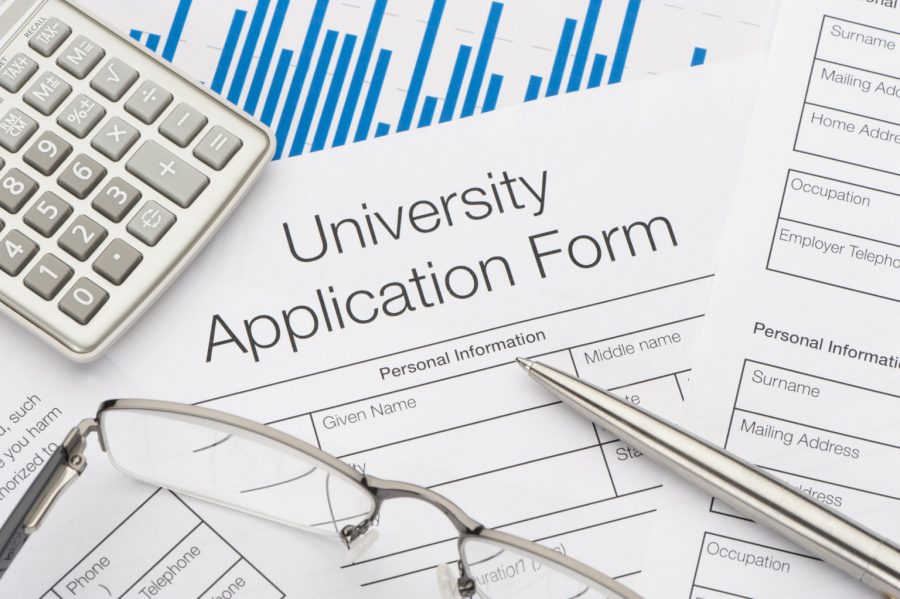By Kathryn Burress ’16, Contributor
Every fall, seniors across America face the pressure of college applications. There are millions of questions running through the minds of these 17 and 18 year olds, such as “what if I do not know what I want to major in?”, “are my test scores high enough?”, “what should I be writing my Common App essay on?” and “should I apply Early Decision?” The stress is high. Although the idea of applying to college and potentially being enrolled before winter break may appeal to the average senior, applying Early Decision contains potentially unforeseen levels of stress and uncertainty on its own.
In general, most colleges offer a few different deadlines to applicants. Regular Decision applications are usually sent in by January. Students receive decisions by March, and usually commit to a school by May 1st. Applicants can apply to as many schools Regular Decision as they want. For students who want to decide where they are going to school as early as possible, there is Early Decision and Early Action. Students can only apply to one school under the binding Early Decision deadline, usually in November: if they get accepted to that school then they have to go there. Early Action poses less of a commitment: it often has November or December deadlines, and students receive a decision by January or February. Once accepted, students do not have to commit to that school until May 1st if they applied Early Action. There is also single-choice Early Action, which is non-binding but does not allow the applicant to send in any other Early Decision or Early Action applications. Some schools do not use any of these, and admit students on a rolling basis, which means that they read applications as they come in and send out decisions as they read applications. Rolling admission schools might have a deadline for maximum scholarship consideration. Many feel schools that only have binding early application options may actually be limiting their applicant pool.
“Tufts and Duke are both kind of reaches for me, and neither of them have an Early Action program, only Early Decision and Regular Decision, so I have to choose between the two since I might not get in with Regular Decision,” said one senior.
Duke University stated on their website that they accepted 26% of Early Decision applicants, but only 9% of the Regular Decision applicants, and says that “There are students for whom applying Early Decision can make all the difference.”
Country Day College Counselor Mrs. Patricia Dunn says that “You cannot afford to wait to apply to Northwestern and be applying with 32,000 other people.” Colleges want high enrollment rates, and in theory every student accepted under Early Decision will enroll in that college.
Although students sign on Early Decision applications that they will enroll in the school if accepted, there is no legal obligation to attend the school. The most common, and accepted reason for turning down an Early Decision acceptance is the cost of the school. If the financial aid package offered to the student is not enough for the student or the family to pay the remaining cost, the student will not be required to attend the school. With this in mind, it seems that Early Decision may be more appealing to a student who knows that they can afford the cost of the school.
If a student simply does not enroll after being accepted Early Decision, they could be blacklisted by other colleges that they applied to. A student shared his fears with me, “Early Decision kind of scares me. I am just not comfortable with signing away four years of my life on a dotted line without seeing my other options, including financial aid packages.” For a seventeen or eighteen year old, the commitment may simply be too much.
According to Dunn, even families who can afford the full cost of college would understandably prefer to pay less. A student could apply Early Decision to their top choice school, not knowing that they could receive a considerably greater amount of money from their second or third choice school.
Even at Country Day, a school full of students ready to take on the world, Early Decision may just be too much. By offering only Early Decision and Regular Decision, colleges could be losing potential applicants who did not want to commit to only one school early on, but got a great offer from an Early Action or rolling admission school. Though students may think that applying Early Decision is their only option to get into their top choice school, they should trust in their ability to find a college that is a good fit academically and financially for them. In the long run, whether you press “submit” on the Common App in November or in January, your academic successes and abilities will show through to the schools, and come March your biggest stress might just be having too many good options.
Sources:
https://professionals.collegeboard.com/guidance/applications/early
https://www.petersons.com/college-search/ask-experts-early-decision.aspx
http://admissions.duke.edu/application/timeline
http://www.nytimes.com/2007/11/04/education/edlife/strategy.html?_r=0
Image Source:
http://www.huffingtonpost.com/scott-weingold/the-6-biggest-mistakes-yo_b_3687980.html




